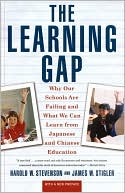Category Books
- Fiction Books & Literature
- Graphic Novels
- Horror
- Mystery & Crime
- Poetry
- Romance Books
- Science Fiction & Fantasy
- Thrillers
- Westerns
- Ages 0-2
- Ages 3-5
- Ages 6-8
- Ages 9-12
- Teens
- Children's Books
- African Americans
- Antiques & Collectibles
- Art, Architecture & Photography
- Bibles & Bible Studies
- Biography
- Business Books
- Christianity
- Computer Books & Technology Books
- Cookbooks, Food & Wine
- Crafts & Hobbies Books
- Education & Teaching
- Engineering
- Entertainment
- Foreign Languages
- Game Books
- Gay & Lesbian
- Health Books, Diet & Fitness Books
- History
- Home & Garden
- Humor Books
- Judaism & Judaica
- Law
- Medical Books
- New Age & Spirituality
- Nonfiction
- Parenting & Family
- Pets
- Philosophy
- Political Books & Current Events Books
- Psychology & Psychotherapy
- Reference
- Religion Books
- Science & Nature
- Self Improvement
- Sex & Relationships
- Social Sciences
- Sports & Adventure
- Study Guides & Test Prep
- Travel
- True Crime
- Weddings
- Women's Studies
The Learning Gap » (Reprint)

Authors: Harold W. Stevenson, James W. Stigler
ISBN-13: 9780671880767, ISBN-10: 0671880764
Format: Paperback
Publisher: Simon & Schuster Adult Publishing Group
Date Published: January 1994
Edition: Reprint
Author Biography: Harold W. Stevenson
Book Synopsis
It is no secret that American education is in crisis. Our children lag behind students in other countries--and they are losing ground. In The Learning Gap, Harold W. Stevenson and James W. Stigler put this crisis in perspective by comparing teachers, parents, children, schools, and educational practices in the United States, Japan, Taiwan, and China. Based on five major studies, funded by the National Institutes of Health and the National Science Foundation and featured on the front page of The New York Times, this is the first comprehensive account of what works in elementary education and what doesn't--and why. The authors analyze the role of standardized tests, tracking, special education, class size, money, classroom discipline, textbooks, and parental involvement and arrive at some startling conclusions that will drastically alter our understanding of the problems and possibilities of our schools. Television is not to blame for children's poor performance nor are underpaid or poorly trained teachers. And contrary to prevailing opinion, class size should be increased, and children should not begin academic preparation in preschool and kindergarten. Most important, the authors show that parental involvement is critical to children's learning and that schools should reward individual effort rather than emphasize innate ability. Bringing a clarity of purpose to the debate on education that is missing from the schools themselves, The Learning Gap is a landmark study that will shape the educational agenda of the future.
Library Journal
Stevenson (psychology, Univ. of Michigan) and Stigler (psychology, Univ. of California, Los Angeles) offer a comparison between American (Chicago, Minneapolis) and Asian (Taiwan, China, Japan) elementary schools. Quantifiable variables include instruction time, test data, length of school year, curriculum studied, and instruction strategies. Another factor the authors consider is attitude (e.g., parental attitudes toward schooling, children toward learning, society toward educators, etc.). The writing style is informal, and sufficient statistical data is presented to support the findings. Some challenges are offered: ``The American educational system as it currently exists is producing an educationally advantaged minority and a disadvantaged majority.'' The authors conclude that ``Americans are proud of their individualism; Asians are proud of their group orientation.'' For large public and academic libraries.-- Lois F. Roets, Drake Univ., Des Moines
Table of Contents
| Preface | 7 | |
| 1 | Introduction | 13 |
| 2 | Academic Achievement | 28 |
| 3 | Children's Lives | 52 |
| 4 | Socialization and Achievement | 72 |
| 5 | Effort and Ability | 94 |
| 6 | Satisfactions and Expectations | 113 |
| 7 | The Organization of Schooling | 130 |
| 8 | The Profession of Teaching | 156 |
| 9 | The Practice of Teaching | 174 |
| 10 | Defining the Solution | 200 |
| Endnotes | 225 | |
| For Further Reading | 233 |
Subjects
 Educational Levels & Settings
Educational Levels & Settings  Elementary Education
Elementary EducationEducation & Teaching
 Elementary Education
Elementary Education  Education, Elementary
Education, ElementaryEducation & Teaching
 Elementary Education
Elementary Education  Education, Elementary -> Cross - cultural studies
Education, Elementary -> Cross - cultural studiesEducation & Teaching
 Elementary Education
Elementary Education  Education, Elementary -> United States
Education, Elementary -> United StatesEducation & Teaching
 Multicultural Education
Multicultural Education  Comparative education
Comparative educationEducation & Teaching
 Social & Political Aspects of Education
Social & Political Aspects of Education  Education - Philosophy & Social Aspects
Education - Philosophy & Social AspectsEducation & Teaching
 Teaching & Teacher Training
Teaching & Teacher Training  Teaching - Classroom Planning & Management
Teaching - Classroom Planning & ManagementNonfiction
 All Nonfiction
All Nonfiction  Education - General & Miscellaneous
Education - General & MiscellaneousNonfiction
 All Nonfiction
All Nonfiction  Education - Social & Political Aspects
Education - Social & Political Aspects
